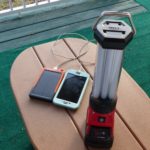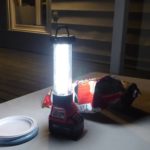- Note: Our comments are personal observations. We have not been paid by any company to review their products.
Wildfires in California. Hurricanes along the coast. Blizzards and tornadoes everywhere. In this era of climate change every household should prepare for long stretches without electrical power or even the possibility of evacuating at short notice. And the recent earthquake in Alaska reminds us of the importance of being prepared especially in cold months when food, water, and shelter are critical.
Fortunately, many families have assembled emergency kits that include a mix of essential items useful when the lights go out. For detail see the Winding Pathways article on important items to stock in the kit. Emergency kits can be quickly grabbed if evacuation is needed and the contents help make life more comfortable should there be no need to leave but the house has no electricity.
Two items often are forgotten but become critically important during a widespread emergency. Be sure to keep these on hand:
CASH:
When the power goes out credit and debit cards probably won’t work. Cash always works. Keeping a couple of hundred dollars in small bills makes buying necessary items during a power outage possible. It’s a good idea to hide money somewhere in the emergency preparedness kit.
CHARGING:
When Hurricane Sandy left millions of people without electrical power for weeks a critical problem was the inability to charge cell phones and other electronic devices. The cell network was operating since companies have backup generators. But most people’s phone batteries discharged, and they had no ready way to recharge them. Fortunately, there are several options for charging. Here are two that work well:

Solar chargers help keep people connected when the power goes out.
Solar chargers: Small inexpensive solar powered devices charge phones when placed in the sun. These are sold in camping and electronic stores. They will work on cloudy days, although charging will be slower than when the sun shines.
Battery chargers: For many years we’ve used Milwaukee brand drills and saws for projects around the house. The company recently sent us an ideal product to solve two problems posed by power failures. It is a light powered by the same lithium-ion batteries that run power tools. The light has a port enabling connection with cell phones. It charges them up quickly. We always keep four batteries fully charged, and each battery will run the light for many hours and recharge a phone several times. The light is surprisingly bright, and we’ll bring it on future camping trips instead of our old gasoline lantern. This device fills two emergency needs-light and charging.

The lantern throws excellent light after dark.
When buying cordless power tools and other accessories it’s a good idea to purchase ones that can both run the tools and charge a phone.
Potable Water:
There is a third item that’s also often forgotten. That’s drinking water. We keep in storage 25 gallons of clean water in five-gallon containers. Should that run out we have two backpacker style filters that remove bacteria and viruses from water. If we need even more water, we keep a few tiny jars of water purification pills in our emergency bin. Water filters and purification tablets are sold in camping stores and are usually marketed to backpackers. These enable purifying water from nearby ponds and streams.
Hopefully, the power won’t ever go out, but the reality is that storms are increasing. Along with them comes higher odds that the power will go out. It’s best to be ready.

